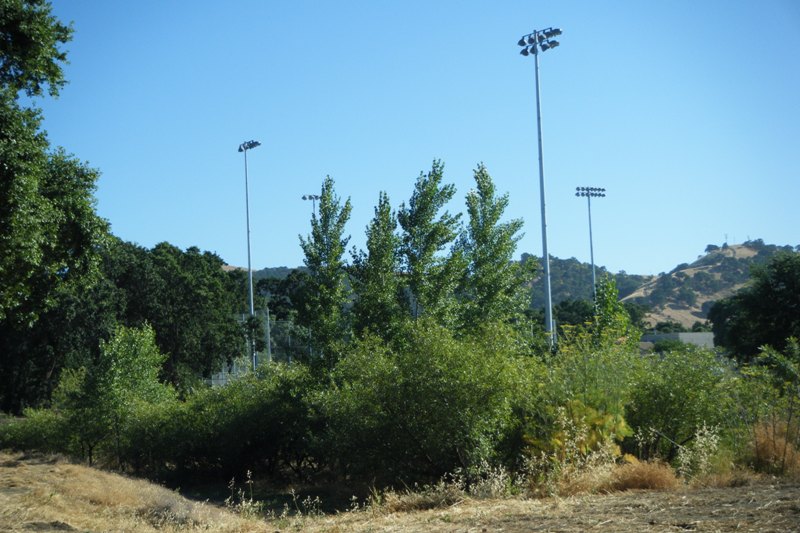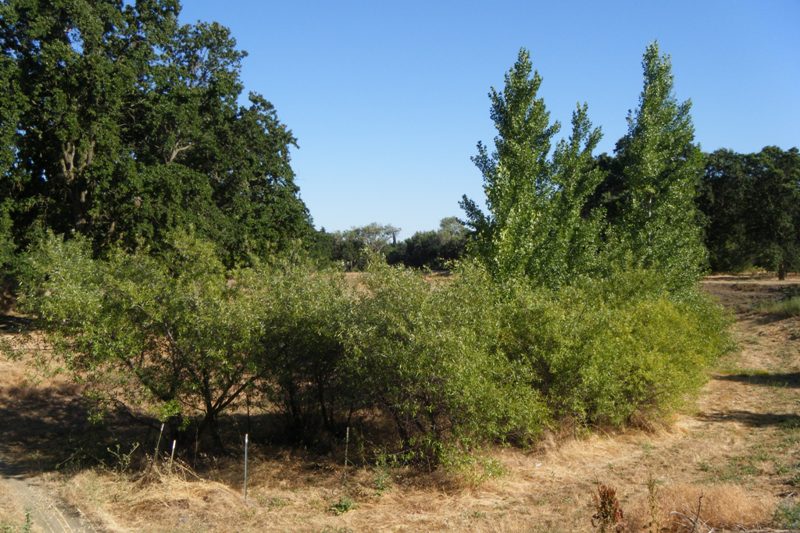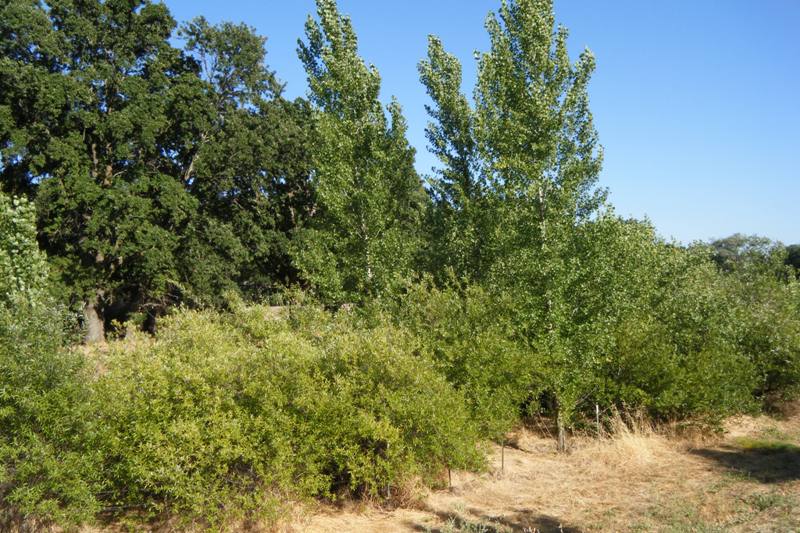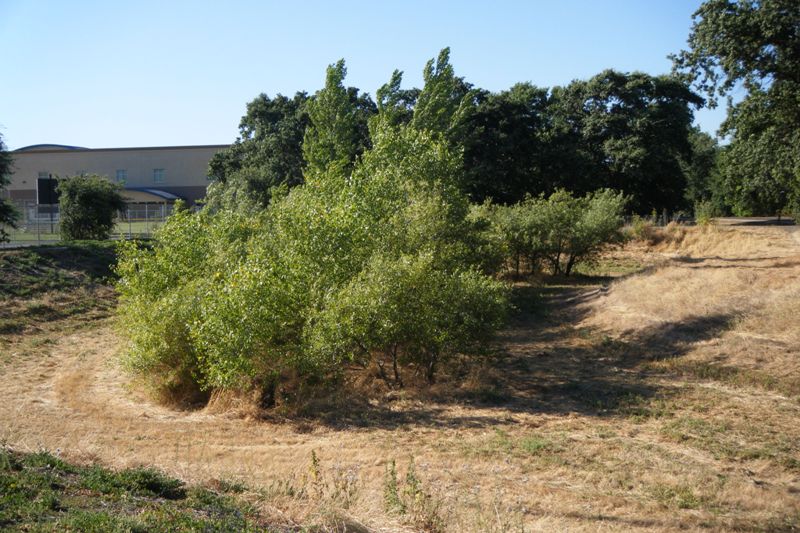Establishing a planting of willows and cottonwoods from cuttings  2004-2010
2004-2010
This project was undertaken to help satisfy a US Army Corps of Engineers mitigation requirement related to the construction of a detention basin near a creek that winds through an urban area. Because revegetation of the affected stream bank was not possible, a proposal was made to mitigate by planting riparian trees (willows and cottonwoods) on the floor of the basin itself. We conducted site investigations to determine whether this approach was feasible, and subsequently designed and executed the plantings.
1. Evaluate the site for distance to water table
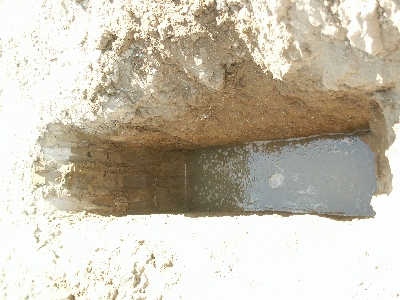
Phreatophytes such as most willows and cottonwoods need to have access to a relatively unrestricted supply of water, either shallow groundwater or areas wetted by water bodies. In this project, we used a backhoe to dig through compacted clay subsoil exposed during construction of a detention basin to determine the depth to groundwater within the basin in late summer. The results differed from what one might anticipate. On the side of the basin closest to the stream, which was also the more deeply excavated portion of the basin, we did not encounter groundwater at a depth of 10 to 12 ft below the basin floor. This indicated to us that it would be difficult to establish willows and cottonwoods in this area. However, on the opposite end of the basin, the depth to water table was about 4 ft below the basin floor (image above), indicating that cuttings should be able to establish roots that would reach the water table within the first season. Hence, plantings were localized in this portion of the basin.
2. Prepare soil
Because the planting was to occur in clay subsoil, we wanted all the planting sites to be augered prior to planting. However, in mid-summer the ground was just too hard and the auger, mounted on a small tractor, could not penetrate the soil. In the end, a backhoe was used to dig to the depth of groundwater at each planting site. Holes were then backfilled with the excavated soil.
We planned to auger each planting site after the first fall rains fell and softened up the soil. However, the contractor did not auger the site in a timely manner and attempted to do the job in mid-December, after substantial amounts of rain had fallen. Only about half the sites were augered, although the soil was wetter than optimal. Additional rain fell, and we decided to forego augering on the remaining sites due to wet conditions. To facilitate insertion of the cuttings to the proper depth, we used an improvised dibble made of 1/2 inch galvanized pipe (shown below) to make holes for the cuttings in the remaining sites. The pavers in the background are 6 inches square. The dibble was pressed into the ground up to the tee and then pulled out using the elevated handle.
3. Collect cuttings
Cuttings were collected from willows (Salix laevigata and S. lasiolepis) and cottonwoods (Populus fremontii) growing along local creeks in late December/early January. Cuttings were 4 to 5 feet long and from 0.5 to 1.5 inch diameter at their base. Background pavers in the picture are 6 inches square. We did not treat the cuttings with rooting hormones or soak them in water. They were planted the same day they were collected.
4. Plant cuttings
The dibble was used to make holes in the ground within each backhoe-dug planting spot. Then a cutting was pushed into the dibble hole. Cuttings were inserted into the soil to a depth of about 3 feet, so that the end of the cutting would be no more than a foot above the summer groundwater surface. Four cuttings spaced a minimum of 10 inches apart were planted in each planting spot to allow for attrition. Where there were augered spots, cuttings were placed in the augered area. After planting, cuttings were trimmed to a height of about 6 to 12 inches above grade. Planting sites were mulched with shredded bark mulch. A 4 strand wire fence was built around the whole planting to try to limit damage from kids on their bicycles who had established a path through the planting site. Planted cuttings are shown in the picture below- mulch had not yet been applied in the photo.
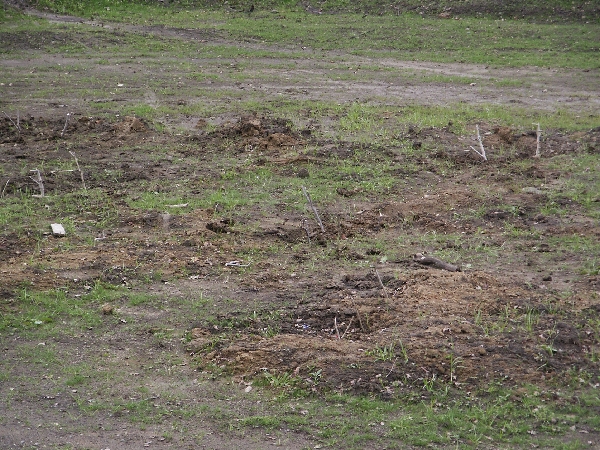
5. First year results
Cuttings of all three species grew well. The picture below was taken April 9, 2004, and shows P. fremontii cuttings in the foreground site and a mixed site with P. fremontii and S. laevigata in the background. Weed competition was an issue because the whole site had been hydroseeded, but the mulch served to reduce weed growth next to the cuttings.
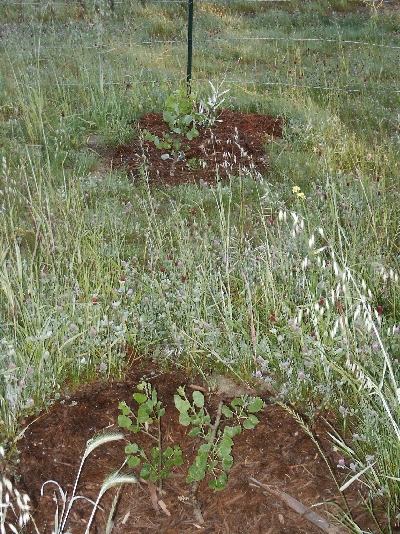
Photos taken in July 2004 (below, upper left) and September 04 (below, upper right, lower left, lower right) show that cuttings became established at all planting sites during the first season. All planting sites had at least one established plant. No irrigation was used in establishing the planting. The tallest plants are in the area that was augered. Root growth in this area may have been favored by the additional soil decompaction provided by the augering. However, this is also the area that has the least ponding in the winter, so some of the reduced growth in the non-augered area could be related to more prolonged anaerobic conditions in this area.
Plants at the site continued to perform well into their
second summer. Photos below show performance of the site though 2010. Despite flooding of the detention basin in December 2005 and a fire that coased partial to complete topkill of many plants in August 2006, plant cover within the fenced planting area was nearly 100% by 2007. By June 2010, several cottonwoods had grown well above the willow layer.
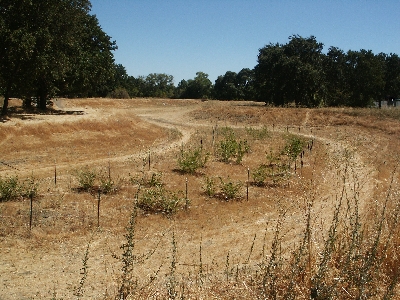
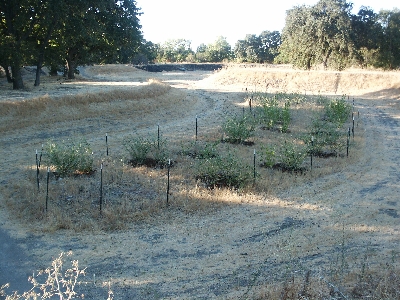
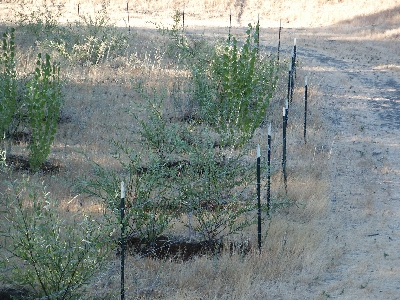
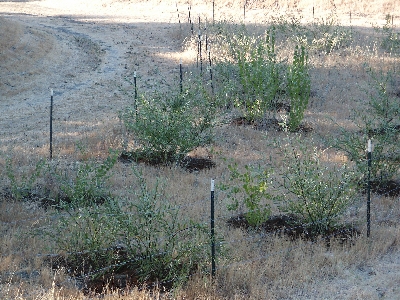
6. Second year photos
Photos taken in September 2005

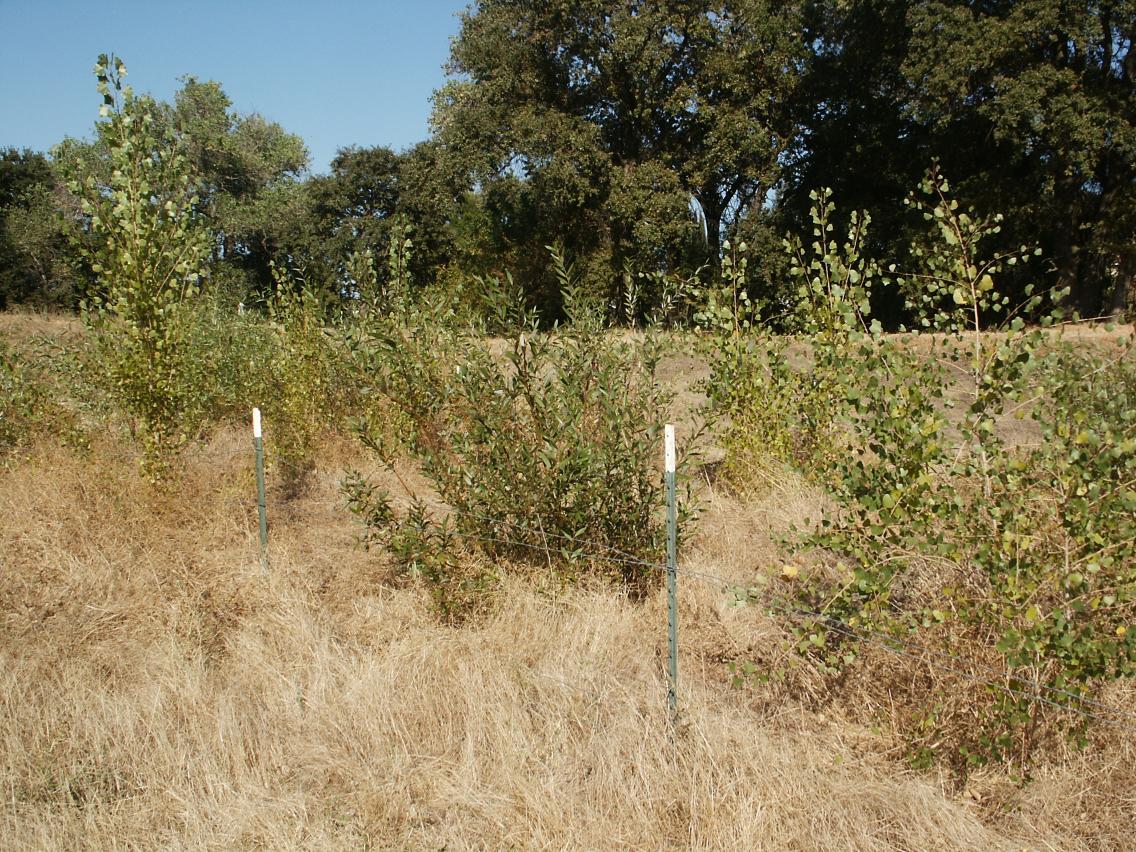
Flooding in December 2005
7. Damage and resprouting following a fire in June or July 2006
Photos taken August 2006
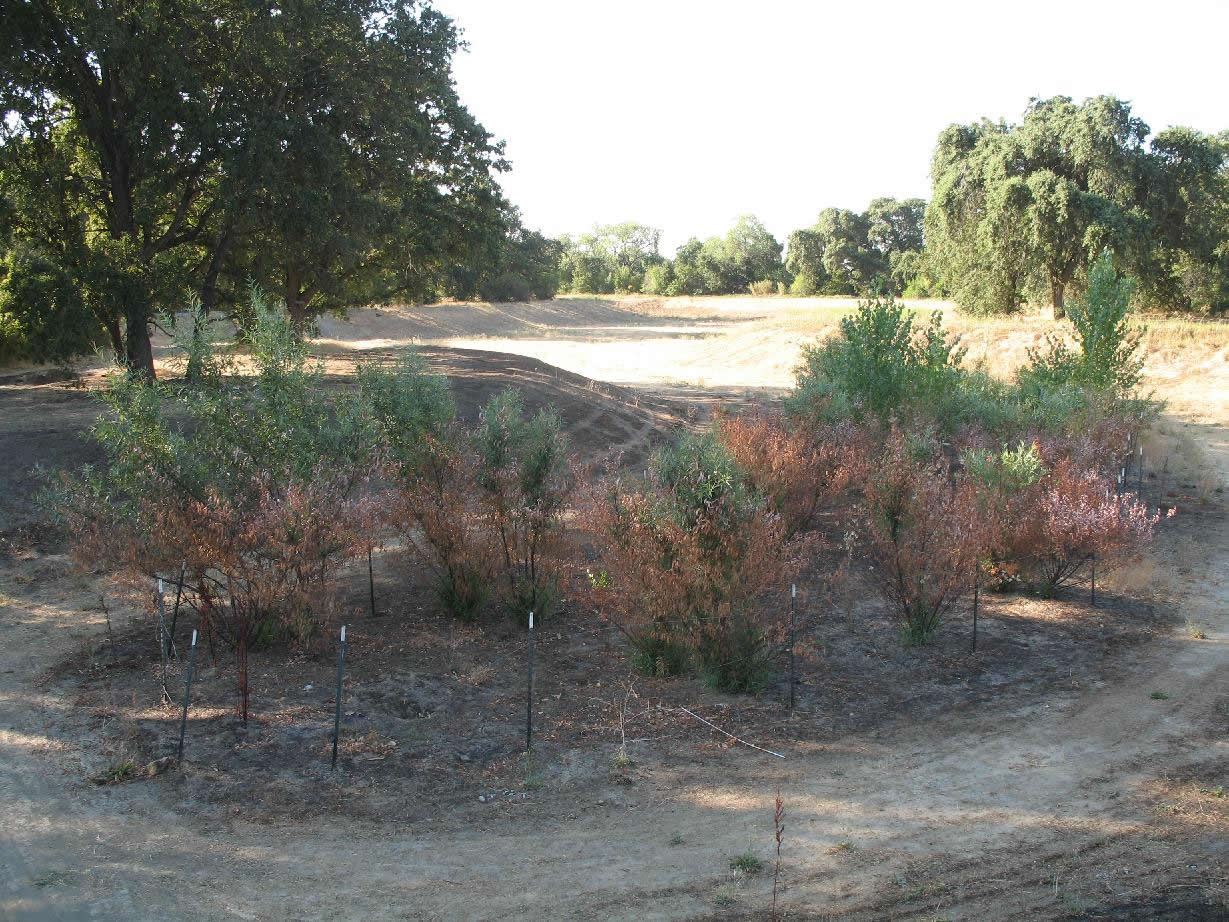
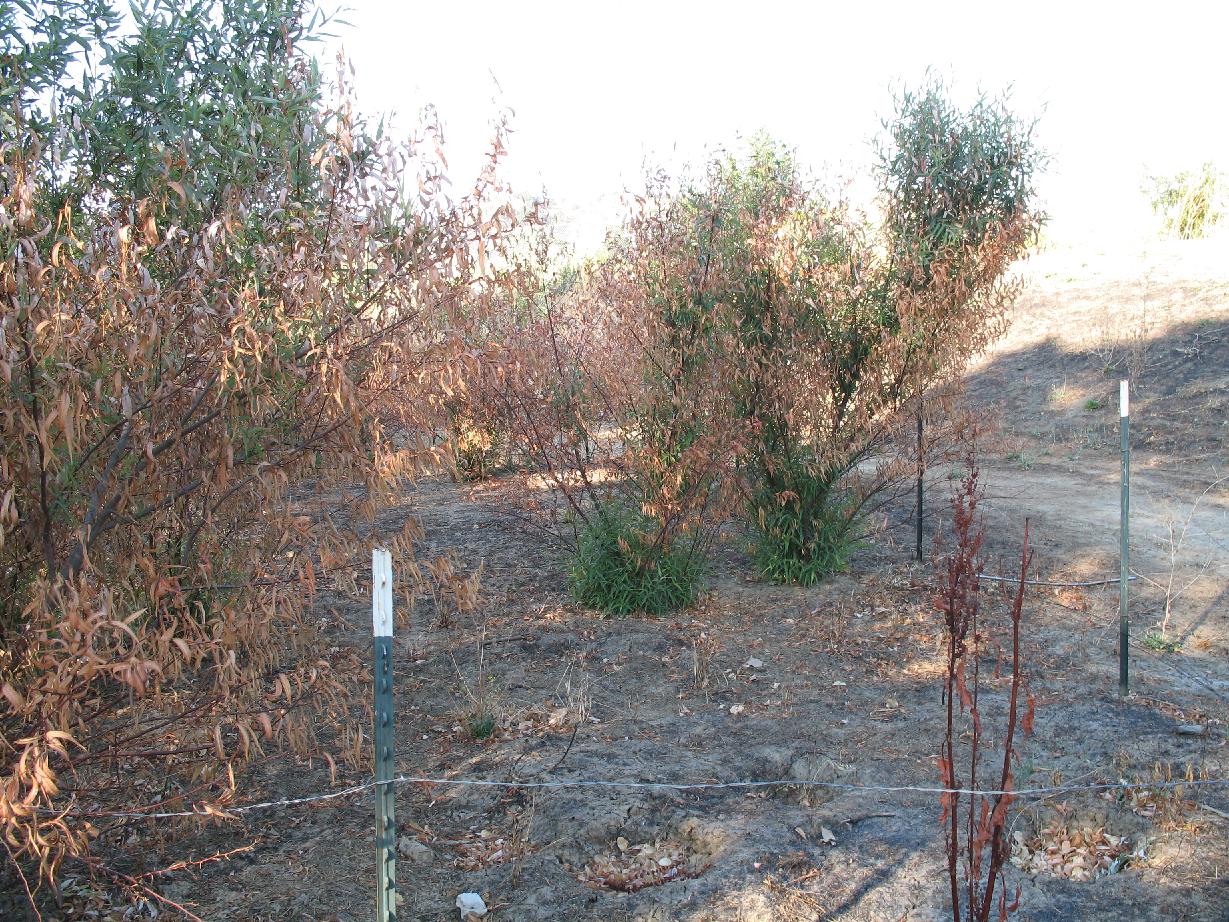
8. September 2007
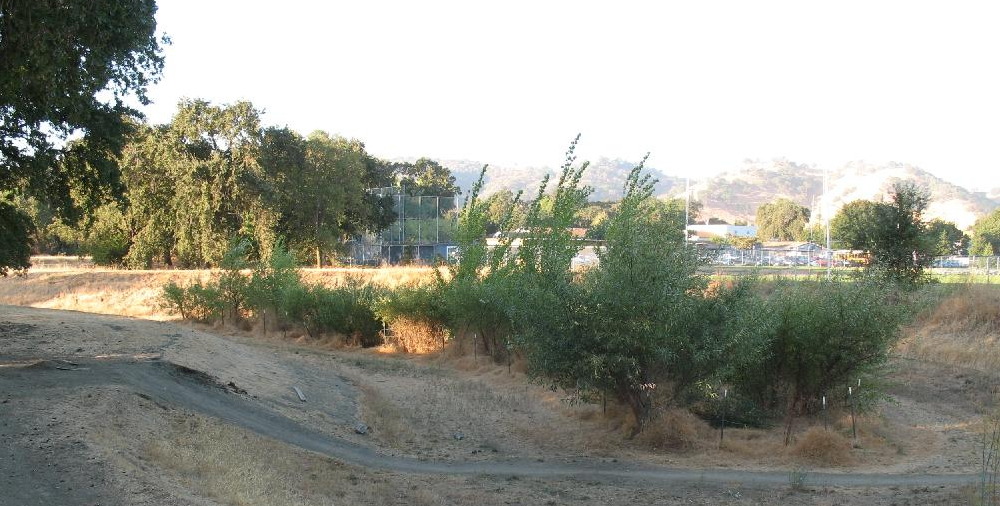
9. June 2010
